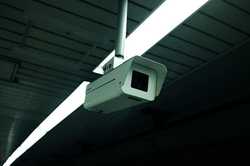
CTA has added thousands of security cameras, yet crime rates on the “L” system have more than doubled since 2015. These crimes put riders at serious risk of injury or death. When riders use the system, CTA has a duty of care to protect individuals from individuals and incidents that could cause them harm.
Crimes on the “L”
Crimes on the “L” range from pick-pocketing and robbery, to sexual assault and other forms of physical violence. In all, there were 1,187 incidents serious enough to warrant reporting to the FBI in 2015. That number rose to 2,371 in 2019. This is a 100% increase in the violent crime rate in just four years and represents a serious failure of CTA to protect the public from danger.
By comparison, serious crimes in Chicago have risen just 8.5% from 2015 to a total of 113,147. Statistically, Chicagoans are safer on the streets than they are using the “L.” moreover, arrests for crimes on the “L” have dropped in recent years. In 2015, city police made an arrest in one of every four cases; in 2019, that rate dropped to one in six crimes. Overall, the CTA has a crime rate of 1 crime for every 95,000 tickets sold. Approximately 75% of these crimes are nonviolent, meaning they are pick pocketing or purse snatching.
Victims Can Suffer Injuries in Criminal Acts
Crime victims can suffer serious injuries when criminal acts occur. They can suffer broken bones, cuts, and contusions when pushed down or when they slip and fall while giving chase to a perpetrator. They can suffer cuts and lacerations when criminals use knives and other sharp implements to rob them. They can also suffer gunshot wounds when firearms are involved. Further, they can suffer long-term mental anguish, PTSD, and other trauma following a criminal incident.
CTA can be held liable under the doctrine of premises liability for failing to protect passengers from harm. CTA has a duty of care that requires them to properly secure, maintain, and police the public areas under their control. They also have a duty of care to prevent access to dangerous individuals with a known history of engaging in criminal acts on the “L.” When CTA fails to protect individuals from harm, individuals who suffer personal injuries and survivors of those who suffer wrongful deaths can pursue claims against CTA.

